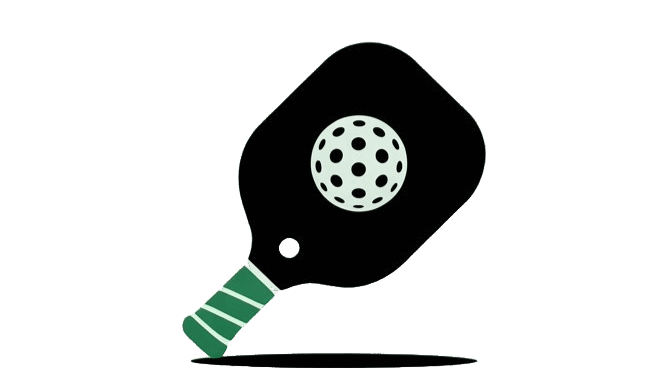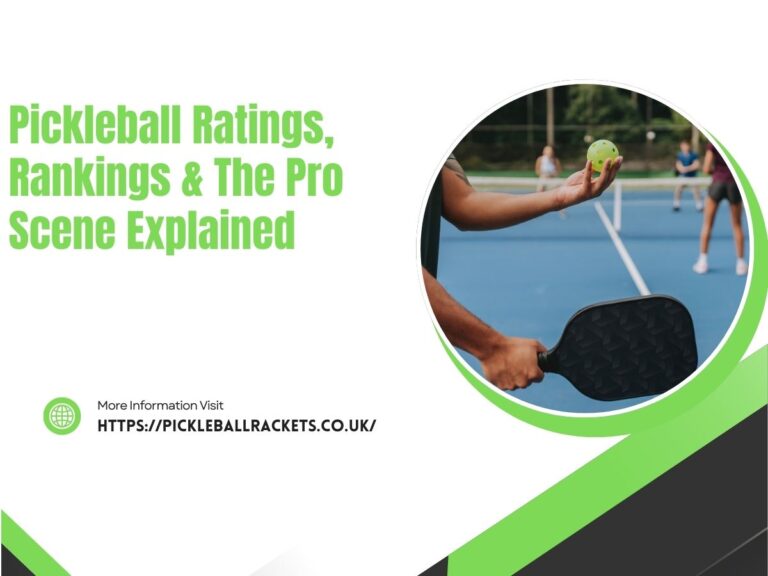You’ve bought your first paddle, you’ve watched a few tutorials, and now you’re ready to play. There’s just one question: where do you actually go? For many newcomers to pickleball, this is the biggest hurdle. The good news is that finding a court, a club, or a community is easier than you might think. The sport’s explosive growth means new venues are popping up constantly, from dedicated courts in public parks to converted tennis courts in local leisure centres.
Pickleball is more than just a game; it’s a social phenomenon. It brings people together, creates friendships, and builds vibrant local communities. This guide is your ultimate resource for navigating the world of pickleball. We’ll show you exactly how to find courts, connect with players, and even start your own club. Whether you’re in the UK, the US, or anywhere else, your pickleball journey starts here.
Where to Play Pickleball Near Me: Your Local Guide
The most common question on any new player’s lips is, “How do I find pickleball courts near me?” The answer is often closer to home than you realize. Courts are appearing in parks, gyms, community halls, and dedicated sports facilities. Here’s how to uncover the hidden gems in your neighborhood.
How to Search for Local Pickleball Courts
Your first stop should be a digital one. Several powerful online tools are designed specifically to help you find places to play.
- Pickleheads: A leading court finder app and website, Pickleheads offers a comprehensive, user-generated map of courts worldwide. You can filter by location, court type (indoor/outdoor), and whether a court has dedicated or temporary lines. It also lists open play sessions, clinics, and tournaments.
- Places2Play: Run by USA Pickleball, this tool is another excellent resource, particularly for players in North America. It provides a detailed map with information on court availability, fees, and contact details.
- Google Maps: A simple search for “pickleball courts near me” or “pickleball clubs near me” on Google Maps can yield surprising results. Many clubs and public courts are now listed, complete with user reviews and photos.
Beyond these apps, your local council or parks and recreation department website is a great place to check for public facilities.
Also Read Pickleball Court Guide: Dimensions, Setup & Cost to Build One.
Common Venues for Pickleball
Pickleball’s adaptability is one of its greatest strengths. It can be played almost anywhere with a hard surface and enough space. Here are the most common places you’ll find courts.
Public Parks and Recreation Centers
Many local authorities are responding to the pickleball boom by building dedicated outdoor courts or adding pickleball lines to existing tennis or basketball courts. These are often free to use or available for a small hourly fee. Outdoor courts offer the joy of playing in the fresh air, but you are at the mercy of the weather. Check your local council’s website for a list of parks with sports facilities.
Leisure Centres and Gyms
Large fitness chains and local leisure centres are increasingly offering pickleball as part of their membership packages. Facilities like David Lloyd, Virgin Active, and Nuffield Health in the UK, and YMCA in the US, often have indoor badminton or tennis courts that are converted for pickleball sessions. These are perfect for year-round play, especially in regions with unpredictable weather. You can find “indoor pickleball courts UK” or similar searches to locate centres near you.
Dedicated Pickleball Clubs
As the sport matures, dedicated pickleball clubs are emerging. These facilities are built specifically for pickleball and often feature multiple courts, a pro shop, and a clubhouse. They provide a fantastic community atmosphere and cater to all skill levels, from total beginners to advanced competitors. While they require a membership fee, the quality of the courts and the vibrant social scene are often worth the investment.
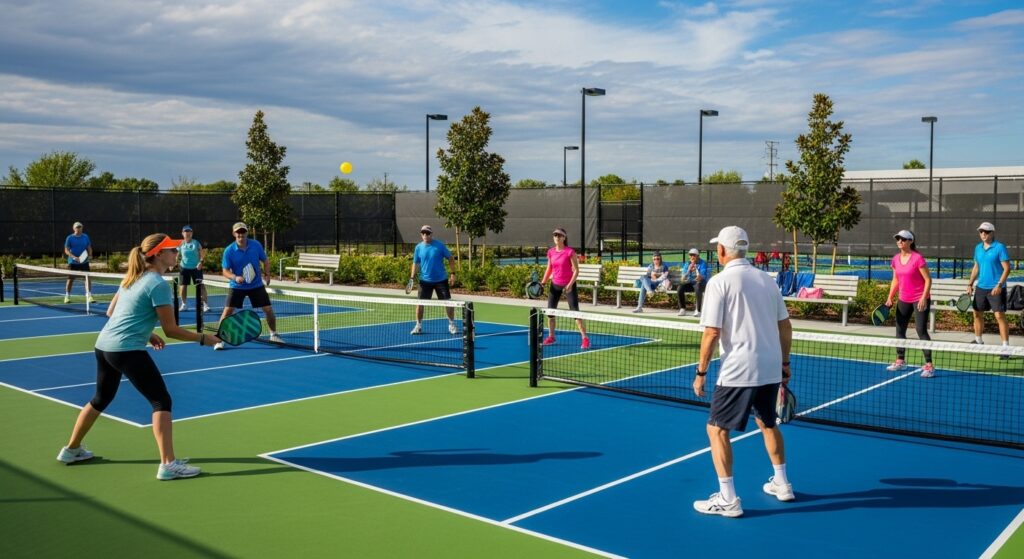
Indoor vs. Outdoor Pickleball Courts: Pros and Cons
Choosing between indoor and outdoor courts can significantly impact your playing experience. Each has its advantages and disadvantages.
Outdoor Pickleball Courts
Playing outdoors connects you with nature and offers a classic sporting experience.
- Pros:
- Atmosphere: Nothing beats playing under a clear sky with a gentle breeze.
- Cost: Public outdoor courts are often free or very cheap to use.
- Availability: Many parks have converted tennis courts, increasing the number of available places to play.
- Space: Outdoor venues typically offer more room around the courts.
- Cons:
- Weather: Rain, wind, and extreme temperatures can cancel play. The sun can also create glare, making it hard to see the ball.
- Court Surface: Asphalt or concrete can be harder on the joints compared to sprung wooden floors indoors.
- Ball: Outdoor pickleballs are harder and have smaller holes to counteract wind, which can feel different to beginners.
When searching for “outdoor pickleball courts near me,” be sure to check if they are dedicated courts or shared with other sports.
Indoor Pickleball Courts
Indoor courts offer a controlled environment, ensuring you can play no matter what the weather is doing.
- Pros:
- Year-Round Play: Unaffected by rain, snow, or wind, allowing for a consistent playing schedule.
- Consistent Conditions: No sun glare or wind to worry about, leading to a more predictable game.
- Better Flooring: Many indoor venues use sprung wood or cushioned surfaces, which are easier on the body.
- Amenities: Often located in gyms or leisure centres with access to changing rooms, showers, and cafes.
- Cons:
- Cost: Usually more expensive, requiring a membership, court booking fee, or drop-in payment.
- Noise: The sound of pickleballs echoing in an enclosed space can be loud.
- Background: The colour of the walls and lighting can sometimes make it harder to track the ball compared to an open sky.
Ultimately, the best choice depends on your priorities, budget, and local climate. Many players enjoy a mix of both.
Pickleball in the UK: A Nation Embracing the Craze
Pickleball’s growth in the United Kingdom has been nothing short of phenomenal. Once a niche activity, it is now one of the fastest-growing sports in the country. The UK pickleball community is thriving, with new clubs and courts appearing weekly. Pickleball England, the official governing body, reports that the number of players has surged, with an estimated 12,000 active players and over 450 venues nationwide.
Where to Play Pickleball in London
London has emerged as a major hub for the sport in the UK. Finding “pickleball London clubs” is becoming easier as more venues cater to the demand.
- Major Pickleball Centres: Venues like the National Tennis Centre in Roehampton occasionally host pickleball events. Purpose-built facilities are starting to appear, but most play happens in multi-sport leisure centres.
- Leisure Centres: Chains like Everyone Active and Better manage numerous facilities across London that offer pickleball sessions. Check their websites for schedules at centres in areas like Islington, Waltham Forest, and Lambeth.
- Community-Led Clubs: Many London-based clubs are run by enthusiastic volunteers. Look for groups in areas like Regent’s Park, Hyde Park (where pop-up courts sometimes appear), and various community halls. Using apps like Meetup is an excellent way to find these local groups.
- David Lloyd Clubs: Many David Lloyd locations in and around London have integrated pickleball into their racquet sports offerings, providing high-quality indoor courts for members.
Also Raed Equipment Need To Play Pickleball.
Other UK Pickleball Hotspots
While London is a key centre, the pickleball fire is spreading across the entire country.
- Manchester: The Greater Manchester area has a growing pickleball scene, with clubs and sessions available in various leisure centres and sports halls.
- Bristol: Known for its vibrant culture, Bristol has an active pickleball community with regular play sessions organized through local clubs.
- Birmingham: The Midlands is another region seeing rapid growth, with several clubs in and around Birmingham offering beginner courses and open play.
- Glasgow and Edinburgh: Pickleball is gaining a strong foothold in Scotland. Pickleball Scotland’s website lists numerous clubs and playing locations, particularly in the central belt.
Using the UK Pickleball Federation Resources
For anyone looking to play pickleball in the UK, the official governing body websites are invaluable resources.
- Pickleball England: Their website features a club finder tool that maps out affiliated clubs across England. It’s the most reliable source for finding official, insured clubs.
- Pickleball Scotland & Pickleball Wales: Similarly, these organizations provide directories of places to play in their respective countries.
These federations not only help you find courts but also provide information on coaching, tournaments, and the latest news in the UK pickleball community.
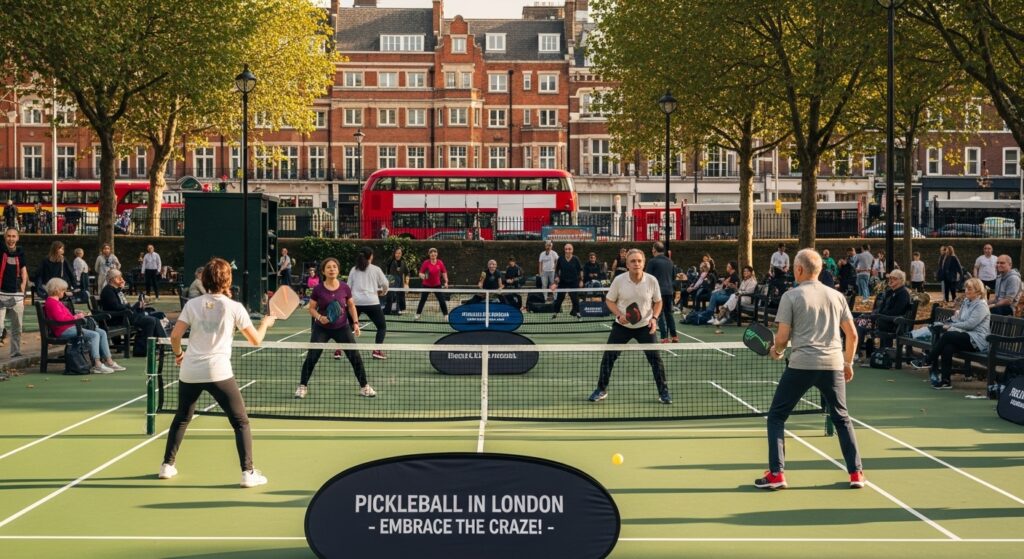
How to Start a Pickleball Club: Build Your Own Community
What if there are no courts near you? Or maybe you’ve got a group of friends who are hooked, and you want to create something more official. Starting a pickleball club is a rewarding way to grow the sport in your area and build a lasting community. Here’s a step-by-step guide.
Step 1: Find a Venue and Secure Playing Time
Your first task is to find a suitable location.
- Potential Venues: Look for local village halls, school gymnasiums (outside of school hours), community centres, leisure centres, or tennis clubs with available court time. Badminton courts are almost the perfect size for pickleball, making them an ideal option.
- Negotiate and Book: Approach the facility manager to inquire about hiring the space. You’ll need to secure a regular weekly slot. Try to book a two-hour session, as this gives enough time for multiple games. Be prepared to explain what pickleball is—many venue managers may not have heard of it yet!
Step 2: Gather the Essential Equipment
You don’t need much to get started, but you will need the basics.
- Paddles and Balls: To begin, you’ll need at least four paddles and a supply of pickleballs. It’s wise to have a few extra paddles for new players to borrow. Many pickleball retailers offer starter packs for clubs.
- Nets: If your venue doesn’t have built-in nets (like badminton nets), you’ll need to invest in portable pickleball nets. These are easy to set up and take down.
- Court Lines: For venues without permanent lines, you can use temporary line markers or specialized court tape. Ensure the tape won’t damage the floor surface.
Step 3: Structure Your Club and Set Fees
Decide on a structure for your club. Will it be a casual drop-in session or a formal membership club?
- Pay-and-Play vs. Membership: A “pay-as-you-go” model is often the easiest way to start. Set a session fee that covers the court hire and contributes to an equipment fund. A typical fee might be £5-£8 per session.
- Registration and Insurance: For a more formal club, consider affiliating with your national governing body (e.g., Pickleball England). This often provides benefits like liability insurance, which is crucial for protecting your club and its members.
Step 4: Promote Your Club and Attract Players
Now it’s time to spread the word.
- Social Media: Create a Facebook group or Instagram page for your club. Post details about session times, location, and cost. Share photos and videos of people having fun to attract new members.
- Local Community Groups: Post announcements in local Facebook groups, on community noticeboards (digital and physical), and in local newsletters.
- Meetup: The Meetup app is an incredibly powerful tool to “find pickleball players near me.” Create a group and schedule your sessions as events. This will make your club visible to anyone in the area searching for pickleball.
- Host a Beginner Taster Session: Organize a free or low-cost introductory session. This is the best way to get people to try the sport. Provide all the equipment and have an experienced player on hand to explain the rules.
Starting a pickleball club takes effort, but seeing a thriving community grow from your initiative is one of the most fulfilling experiences in the sport.
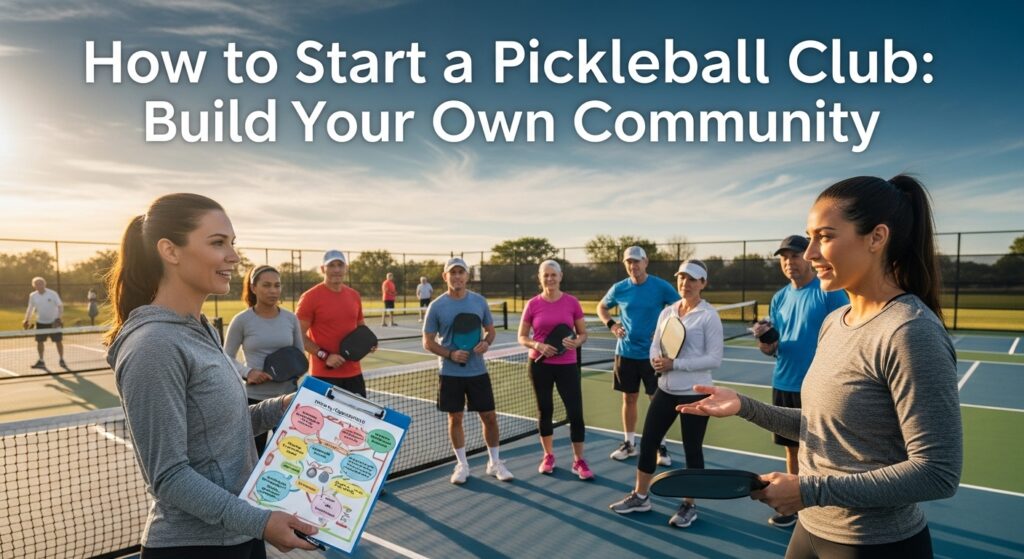
Finding People to Play Pickleball With
Pickleball is a social sport, but it requires at least one other person to play. If your friends and family aren’t on board yet, don’t worry. There are many ways to connect with fellow enthusiasts.
Using Technology to Connect
Modern apps have made it incredibly simple to find playing partners.
- Pickleheads: Beyond its court finder, Pickleheads allows you to join groups and see who is playing at upcoming sessions. It’s a one-stop shop for finding courts and people.
- DUPR (Dynamic Universal Pickleball Rating): While DUPR is primarily a rating system, it has a social component. You can join a club on the app, log your matches, and connect with players at your skill level.
- Meetup: As mentioned, Meetup is perfect for finding “pickleball meetups.” Search for pickleball in your city, and you’ll likely find multiple groups hosting regular events.
- Facebook Groups: Search on Facebook for “[Your Town/City] Pickleball.” Almost every area with a pickleball scene has a dedicated group. These are fantastic for organizing informal games, asking for partners, and staying up-to-date on local pickleball news.
Join Open Play Sessions
“Pickleball open play” is a term you’ll see a lot. It refers to drop-in sessions where players of all skill levels are welcome. You simply turn up, put your paddle in a queue (often called “paddle stacking”), and rotate in to play with different people. This is by far the most popular way to meet new players. Most clubs and leisure centres run open play sessions. It’s a friendly, low-pressure environment perfect for beginners.
Participate in Leagues and Tournaments
For those with a competitive streak, joining a local league or entering a tournament is a great way to meet serious players. Leagues provide structured play over several weeks, allowing you to build camaraderie with your teammates and opponents. Tournaments are exciting, single-day or weekend events that bring together players from all over the region.
Tips for Joining a Club or Open Play for the First Time
Walking into a new club or your first open play session can be intimidating. But the pickleball community is famously welcoming. Here are a few tips to make your first experience a smooth one.
What to Expect at Your First Session
Most open play sessions follow a simple format. You’ll see a designated area where players place their paddles to signify they are waiting for a game. When a court opens up, the next four players in the queue go on to play. Games are usually played to 11 points, and then the players come off to allow the next group to play. This ensures everyone gets plenty of playing time.
Pickleball Etiquette: The Unwritten Rules
Following a few simple rules of etiquette will help you fit right in.
- Introduce Yourself: When you join a new group on the court, a simple “Hi, I’m [Your Name]” goes a long way.
- Call the Score: Before each serve, the server should clearly announce the score.
- Line Calls: Be fair with your line calls. If a ball is on the line, it’s in. If you’re unsure, give the benefit of the doubt to your opponent.
- Respect Skill Levels: In open play, you’ll play with people better and worse than you. Be a good sport whether you win or lose. Don’t hit the ball with excessive force at less mobile or beginner players.
- Tap Paddles: After a game, it’s customary to meet at the net and tap paddles with your opponents and partner as a sign of good sportsmanship.
Bringing Your Own Paddle
While many clubs have paddles to borrow, it’s a good idea to buy your own once you decide you enjoy the sport. Having your own paddle allows you to get used to its weight, grip, and feel, which will help improve your consistency. You don’t need to spend a fortune; there are many excellent beginner paddles available for under £60.

The Role of Pickleball Communities in Growing the Sport
Pickleball’s success isn’t just about how fun it is to play; it’s about the communities that form around the game. Clubs and casual play groups are the lifeblood of the sport’s growth.
These communities create a welcoming environment that transforms a simple activity into a social hub. They organize mixers, social events, and tournaments. They support new players, providing a safe space to learn without judgment. This social fabric is why so many people who try pickleball stick with it. It’s not just a workout; it’s a way to make new friends and feel part of something bigger.
The “pickleball community UK” is a perfect example. It’s driven by passionate volunteers who run clubs, organize events, and act as ambassadors for the sport. This grassroots energy is what has propelled pickleball from an obscure American pastime to a global phenomenon. By joining a club or even just playing regularly at your local park, you become part of this amazing movement.
Also Read Pickleball Ratings, Rankings & The Pro Scene.
FAQs
How do I find pickleball near me in the UK?
Use online resources like the Pickleball England club finder, the Pickleheads app, or search for local leisure centres and community Facebook groups in your area. A simple Google search for “pickleball clubs near me” is also a great starting point.
Is pickleball played in London?
Yes, London has a very active and growing pickleball scene. You can find sessions at various leisure centres managed by Everyone Active and Better, at David Lloyd clubs, and through community-run groups found on apps like Meetup.
How do I start a pickleball club?
Find a suitable venue like a community hall or leisure centre, purchase starter equipment (nets, paddles, balls), decide on a fee structure, and promote your sessions through social media and local community channels. Hosting a free taster session is a great way to attract initial interest.
Can I play pickleball on a tennis court?
Yes, you can. A standard tennis court can accommodate up to four pickleball courts if you use temporary lines and portable nets. Many tennis clubs are now adding pickleball lines to their courts to cater to the demand. The net height needs to be lowered from 36 inches at the sideline to 34 inches in the middle.
What’s the best way to meet new pickleball players?
Attending a “pickleball open play” session is the best method. These drop-in events are designed for players to mix and rotate, ensuring you get to play with a wide variety of people in a friendly, social setting.
Conclusion
Finding a place to play pickleball is the first step on an exciting journey. The sport’s incredible growth means that courts and clubs are more accessible than ever before. From free public parks to dedicated indoor facilities, there is an option to suit every budget and preference.
Use the digital tools at your disposal, don’t be afraid to walk into an open play session, and embrace the wonderfully welcoming community. Whether you’re looking to get fit, make new friends, or discover a new competitive passion, the world of pickleball is waiting for you. So grab your paddle, find a court, and get ready to experience the fun for yourself.
